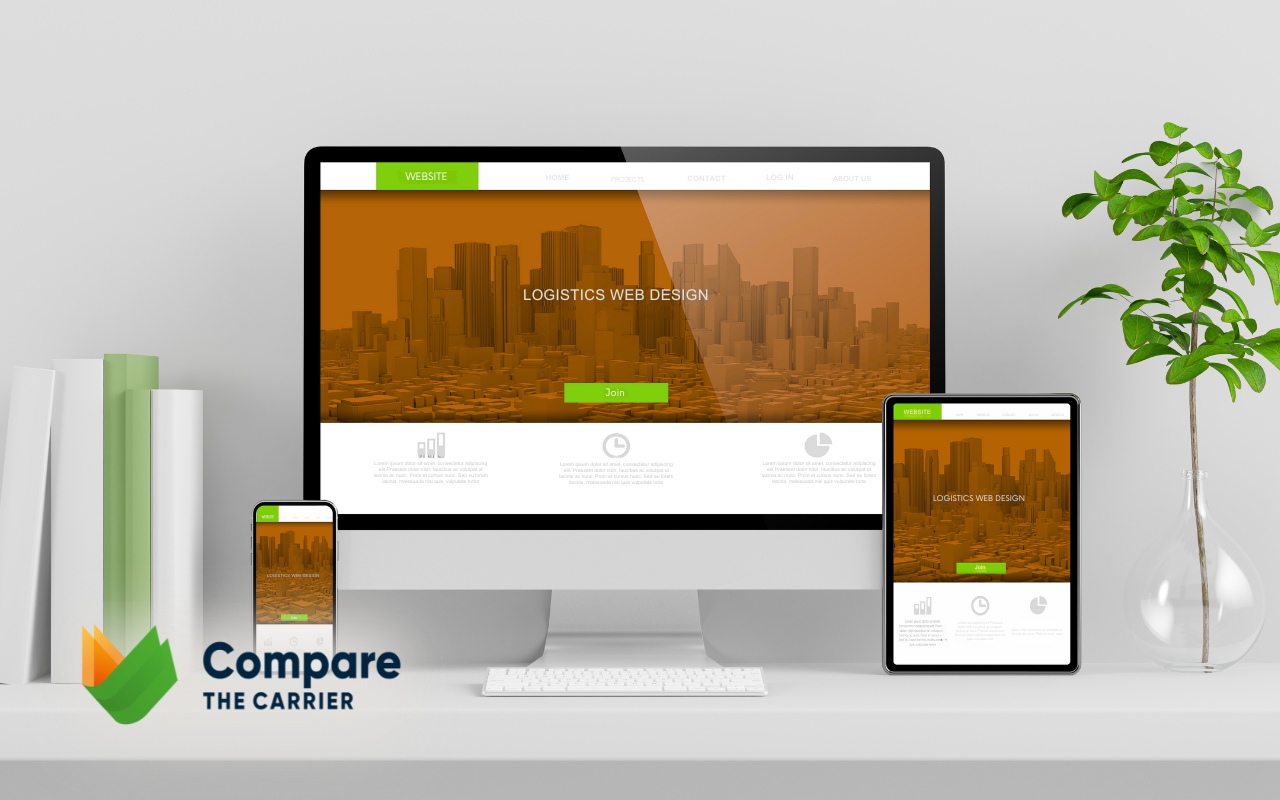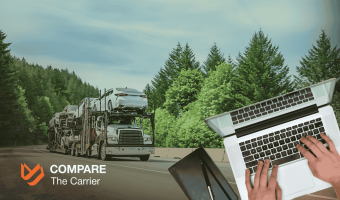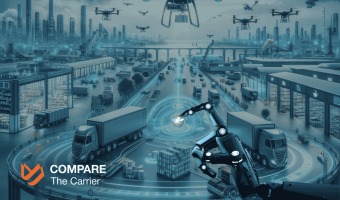In 2024, the logistics landscape is more competitive than ever. Your website isn’t just an online brochure – it’s the digital face of your entire business. A well-designed logistics website doesn’t just look good – it’s a fundamental component that drives brand visibility, enhances user experience (UX) in logistics, and ultimately, optimizes conversion rates.
This article will be your guide to creating a professional logistics website that boosts your company’s digital presence in the competitive 2024 market.
Plus, we’ll explore how partnering with Compare The Carrier can amplify your success even further.
Core Components of Successful Logistics Website Design
When it comes to logistics website design, aesthetics and functionality must work together to create a positive user experience, build brand recognition, and drive those all-important conversions. Let’s break down the essential elements:

1. Visually Appealing and User-Friendly Design
2. Clear and Concise Messaging
3. Compelling CTAs (Calls to Action)
4. High-Quality Images and Videos
Your website shouldn’t just look good – it needs to work hard to achieve your business goals. By focusing on a strong design, clear messaging, and well-placed calls to action, you’ll enhance your digital presence in logistics and pave the way for increased conversion optimization. To dive deeper into leveraging your website for broader marketing strategies, especially focused on brokerage growth, explore our insights on Marketing for Brokerage Growth.
Key Functionality for Logistics Websites
When it comes to logistics website design, there’s a whole truckload of features that can make or break your site’s effectiveness. Living in the USA, where everyone and everything seems to be on the move, your logistics site needs to keep up the pace and even set new benchmarks.
As we are going to explore the critical functionalities that empower logistics websites to generate leads and enhance user engagement, it’s vital to understand the nuanced roles of lead generation and marketing in this ecosystem. Gain insights on balancing these strategies to maximize your website’s effectiveness in our exploration of Lead Generation vs. Marketing.
Let’s break down what your site absolutely needs to be packing to ensure it’s a front-runner in the logistics field, enhancing both UX and your brand’s digital presence.
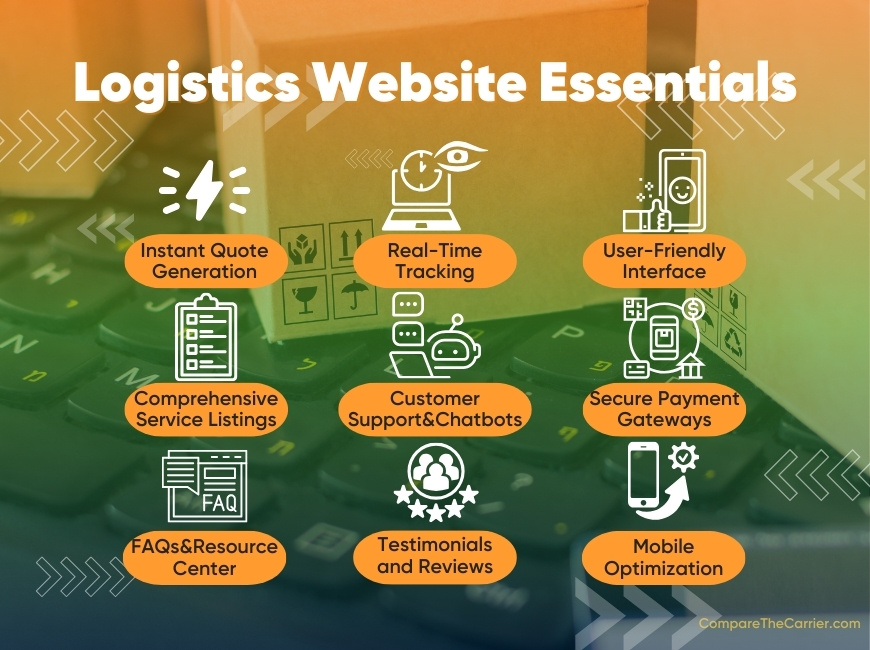
Tackling these key functionalities head-on can turn your logistics website from a mere digital presence into a powerhouse of user engagement and conversion. It’s about meeting users’ needs with precision, transparency, and efficiency, setting your brand apart in the bustling logistics landscape.
Optimizing User Experience (UX) for Logistics Websites
In a world where digital presence can make or break your logistics business, focusing on user experience (UX) isn’t just a good practice—it’s essential. An intuitive, engaging, and efficient logistics website design not only elevates your brand visibility in the logistics sector but also drives conversion optimization. Here’s how you can optimize UX for your logistics website, ensuring your digital footprint not only stands out but also delivers on the expectations of your users.

Optimizing the UX of your logistics website is about understanding and anticipating the needs of your users. It’s a combination of speed, accessibility, engagement, and trust-building. With a strategic approach to logistics website design, focusing on these elements not only boosts your digital presence in the logistics sector but also propels your brand visibility and conversion rates to new heights. Explore our design and branding services to learn how we can enhance your digital presence and UX.
For those interested in the cutting-edge of logistics technology, including how AI can further enhance UX and operational efficiency on your logistics site, our AI in Logistics article offers fascinating insights into the future of digital logistics platforms.
Remember, in the end, a great user experience is what turns visitors into customers, and customers into loyal advocates for your brand.
The Benefits of Partnering with Compare The Carrier
As we’ve navigated through the essential components of a high-functioning logistics website, from the bedrock of intuitive design to the pinnacle of conversion optimization, one thing becomes clear: the journey toward digital excellence in the logistics sector is both complex and rewarding.
It demands a strategic partnership that amplifies your efforts, like joining forces with Compare The Carrier. This collaboration is a game-changer for your digital strategy, enhancing brand visibility, UX, and conversion optimization in significant ways.
Why Partner with Compare The Carrier?
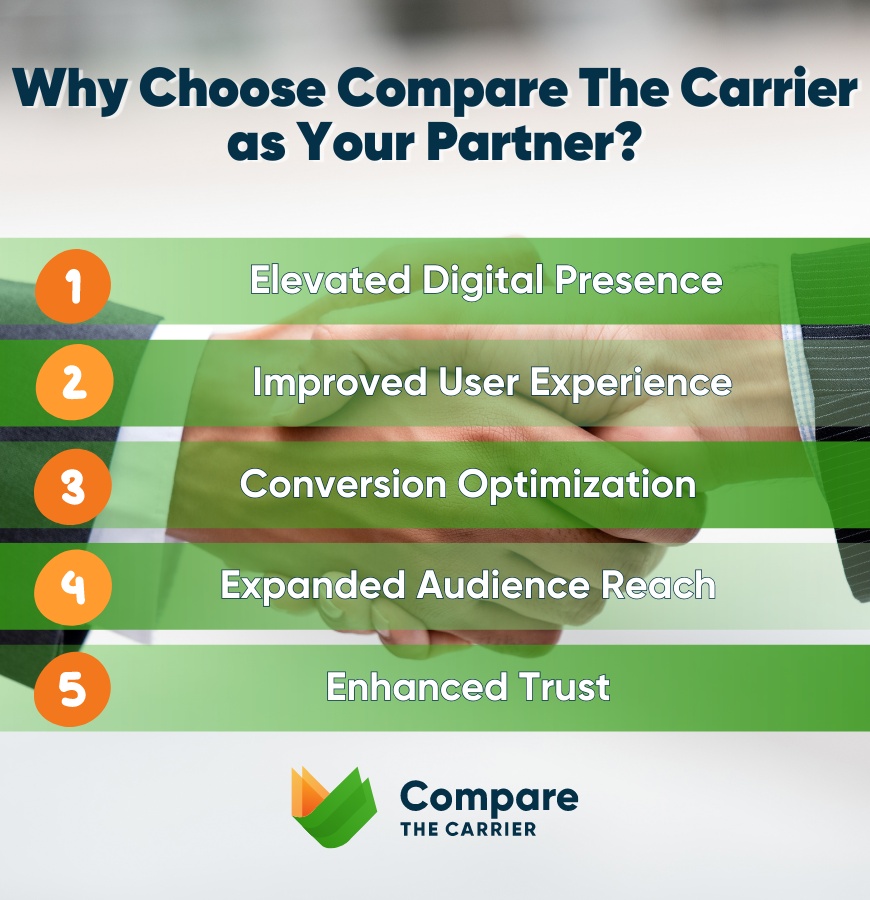
Partnering with Compare The Carrier is not merely about leveraging a platform; it’s about strategically enhancing your logistics website to stand out in a competitive digital landscape. This collaboration offers a unique opportunity to boost your digital presence, improve UX, and drive conversions, setting your brand on a path to success in the logistics industry.
By choosing this partnership, you’re ensuring your logistics services are not only visible but preferred, laying a solid foundation for growth and customer satisfaction in the digital era.
Ready to take your logistics digital strategy to the next level?
Contact us at 202-980-8343 or email us at info@compatethcarrier.com to explore how we can drive your success in the competitive digital landscape.
FAQ
How does UX in logistics improve customer satisfaction?
User Experience (UX) in logistics focuses on making the website easy to navigate, informative, and efficient for users seeking logistics services. Improving UX leads to higher customer satisfaction by reducing frustrations, providing valuable information quickly, and simplifying the process of requesting quotes or tracking shipments.
What features are essential for conversion optimization on a logistics website?
Essential features for conversion optimization include clear calls to action (CTAs), intuitive navigation, fast loading times, mobile responsiveness, secure payment gateways, real-time tracking capabilities, and easy quote generation. These elements work together to reduce barriers to conversion, encouraging users to take the desired actions.
Can Compare The Carrier help logistics companies with digital presence and brand visibility outside the USA?
While Compare The Carrier has a strong foothold in the American market, our team of specialists is equipped to assist logistics companies worldwide in building and enhancing their websites. We understand the universal challenges and opportunities in establishing a digital presence and brand visibility, regardless of geographical location. Our comprehensive support includes website design, optimization for user experience (UX), and strategic marketing solutions tailored to the logistics sector. By partnering with us, logistics companies from any corner of the globe can achieve a competitive edge in the digital landscape.
How can logistics companies measure the success of their website design?
Success can be measured through various metrics such as increased traffic, higher engagement rates, improved conversion rates, reduced bounce rates, and positive feedback from user surveys. Tools like Google Analytics can provide valuable insights into user behavior and website performance.
Does Compare The Carrier offer support for logistics companies looking to improve their listings on the platform?
Yes, Compare The Carrier provides support and guidance for logistics companies to optimize their listings on the platform. This can include assistance with profile creation, service description optimization, and tips on how to effectively showcase their strengths to attract more users and generate leads.
What trends in logistics website design and user experience does Compare The Carrier foresee for the future?
Compare The Carrier stays at the forefront of logistics and digital marketing trends, anticipating increased emphasis on mobile optimization, AI-driven customer service (like chatbots), and enhanced personalization in logistics website design. These trends are expected to drive better user engagement, streamline the decision-making process, and ultimately lead to higher conversion rates for logistics companies.
